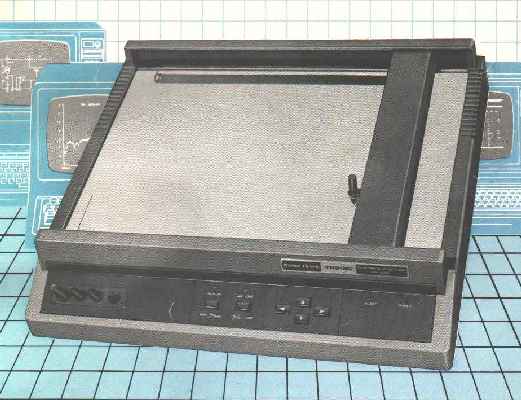 fp215
fp215
 fp215
fp215
Updates
Introduction
The FP-215 is flatbed pen plotter was originally intended for use Radio
Shack's TRS-80 computers around the early 80's. I seem to remember the
original price was around $1000 but they clearanced for $100 around 1985. I
wasn't lucky enough to get one at that time but traded for one almost 10
years later. My original intent was to use it for making printed circuit
boards (drawing directly on PCB stock using a resist pen) but this didn't
really work out. It's primary use has been for paper modelling - the flat
bed allows plotting directly on heavy paper (posterboard) which can then be
cut, folded, and glued.
Electrically, the FP-215 is compatible with modern pc's (at least the parallel
port - I'm not sure about the serial port) - but there are problems with
software and plotting pens. This web page mostly covers my solutions to these
issues.
FP-215 Links:
Software
The native plotting language of the FP-215 is quite simple - I call it RSGL
(Radio Shack Graphics Language for lack of a better term). The best way to
control the FP-215 is to use a utility (filter) to convert from some well
supported graphics language, such as HPGL, to RSGL.
As mentioned, RSGL is pretty simple - the only necessary commands are Move (move
with pen up) and Draw (move with pen down).
I don't know much about HPGL but I'm sure it's more complicated and capable
than RSGL - but ultimately, the plotter's job is to draw on the paper so any
plotter command stream can in principle be converted to a sequence of Move and
Draw commands. In addition, there's nothing that says an application or driver
has to use the full capability of HPGL and if the application or driver
uses only (the equivalent of) moves and draws the conversion from HPGL to RSGL
can be trivial. In fact, the AutoCAD HP7550A plotter driver seems to use only
Moves and Draws (AutoCAD is essentially the only application I use with the
FP-215 although others are possible - Windows for example has an HP7550A print
driver although I don't know how restrictive a subset of HPGL it uses).
HPGL uses PenUp (PU), PenDown (PD), and PenAt (PA) commands - a Move is a PenAt
with the pen up, a Draw is a PenAt with the pen down.
RSplot
RSplot is a conversion utility written in C. It supports only the PU, PD.
PA, and SP (SelectPen) commands. Multiple pens are supported by generating
an output file per pen - this allows the FP-215's pen to be manually changed
between colors. RSplot can be easily extended to include additional HPGL
commands as needed but these four simple commands are sufficient to convert
AutoCAD HPGL plot files.
RSplot was written for DOS and compiled using PowerC. It should be easy to
port to other environments. Download the RSplot package
here.
drawRSGL
drawRSGL is a small Gtk-Perl script for Linux derived from
drawHPGL
(an HPGL previewer by Henry Palonen). For more info on drawRSGL see the
drawRSGL page. See the Sample Plots
section for additonal screen shots.
Service Information
This beast was built to be serviced and is amazingly simple to open. The
case is a clamshell design, hinged in the back. There are only two screws
that need removed and the upper half lifts up like the hood of a car - there
is even a prop rod inside to hold it open.
Sample Plots
Click here to download RSGL examples. These
files can be plotted directly on an FP-215 (for example, under DOS 'COPY
file.PLX LPT1:').